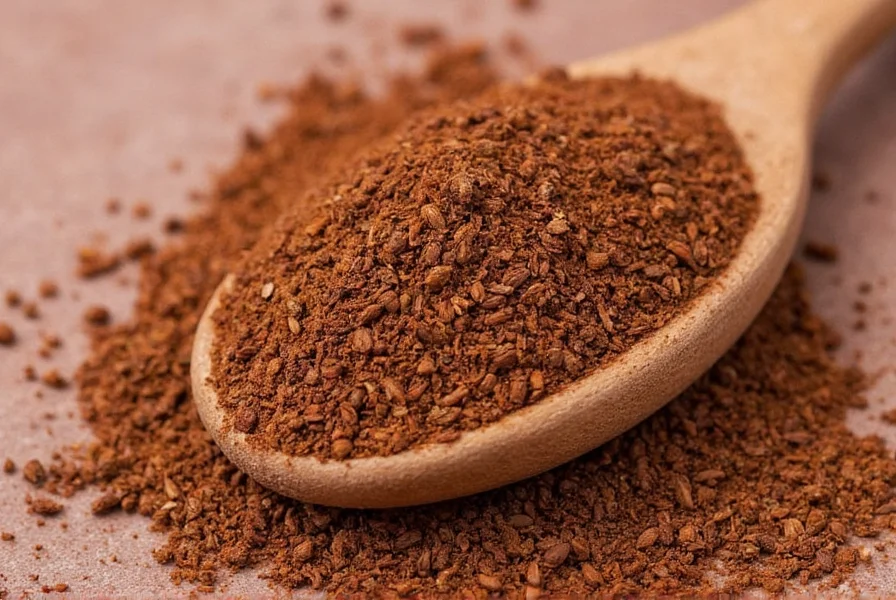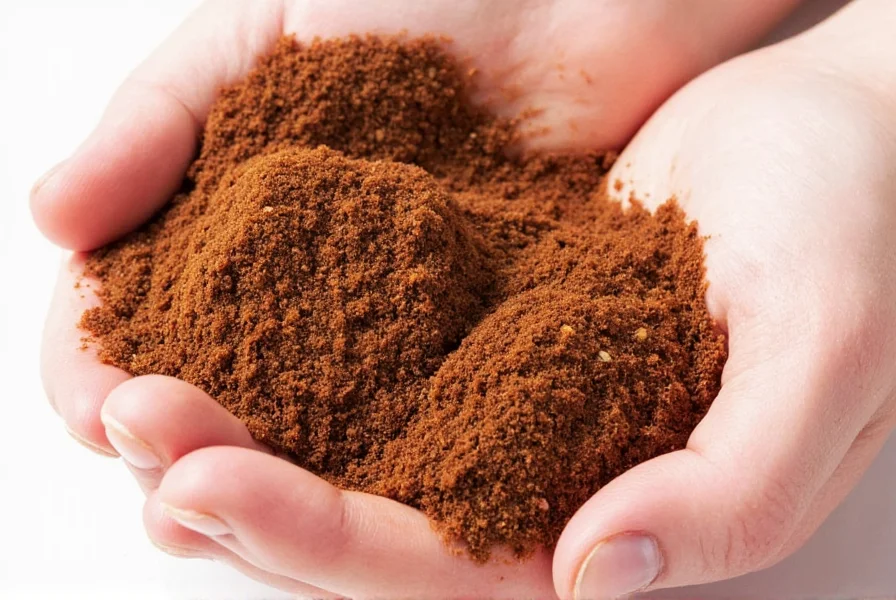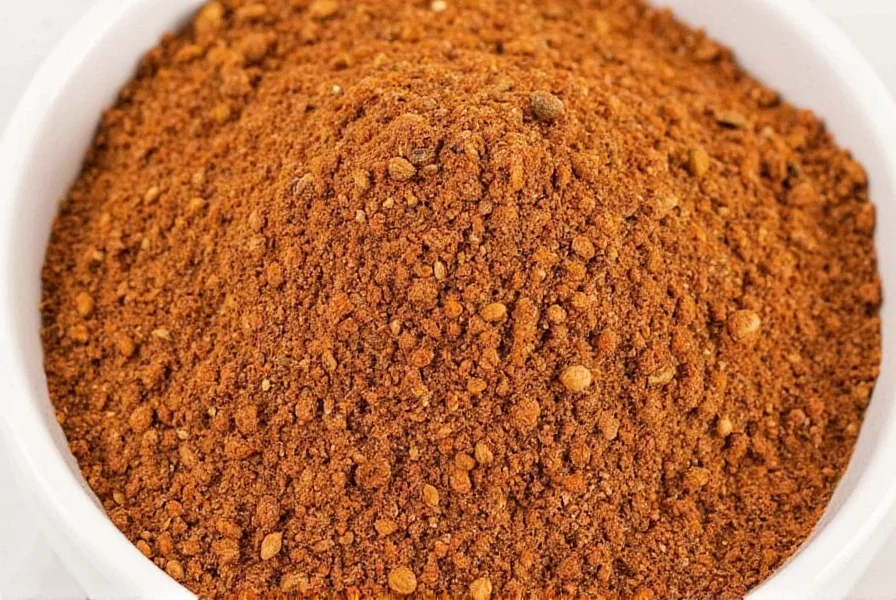Despite its misleading name, ground allspice contains just one ingredient: pulverized allspice berries. The name comes from its flavor resemblance to a blend of spices. Understanding what is ground allspice made of helps home cooks appreciate why it's irreplaceable in certain recipes. Unlike pre-ground supermarket versions that lose potency quickly, freshly ground allspice from whole berries offers significantly brighter flavor.
What Exactly Is Ground Allspice?
Allspice comes exclusively from the dried unripe berries of the Pimenta dioica tree, native to Jamaica and Central America. When these small berries ripen, they're harvested and sun-dried until they turn brown and hard. The drying process develops their signature complex flavor. Ground allspice vs whole allspice represents a crucial distinction—whole berries retain their essential oils much longer, while pre-ground versions begin losing potency within six months.

Flavor Profile and Culinary Applications
Ground allspice delivers a sophisticated flavor profile that simultaneously evokes cinnamon's sweetness, nutmeg's warmth, cloves' pungency, and subtle hints of black pepper. This complexity makes it invaluable in specific culinary traditions:
- Jamaican cuisine: Essential in jerk seasoning, curries, and rice dishes
- Middle Eastern cooking: Features in baharat spice blend and meat rubs
- Baking: Enhances pumpkin pie, gingerbread, and fruit compotes
- Preserves: Complements pickling spices and chutneys
When how to use ground allspice in cooking, remember that heat intensifies its clove-like notes while longer cooking times mellow its complexity. Add it late in the cooking process for brighter flavor or early for deeper integration. A pinch enhances chocolate dishes surprisingly well.
Storage Guidelines for Maximum Freshness
Proper storage dramatically affects ground allspice's shelf life. Consider these recommendations:
| Storage Method | Expected Shelf Life | Flavor Retention |
|---|---|---|
| Air-tight container at room temperature | 6-8 months | Moderate degradation after 4 months |
| Refrigerated in opaque container | 12-14 months | Excellent retention for first year |
| Freezer in vacuum-sealed package | 18-24 months | Near-original quality for 18 months |
Signs your ground allspice has expired include faded color, weak aroma, and lack of flavor impact in dishes. The how long does ground allspice last question depends entirely on storage conditions—properly stored, it maintains quality significantly longer than many cooks realize.
Effective Substitutes When Allspice Is Unavailable
Finding the right ground allspice substitute requires understanding which flavor component matters most for your recipe:
- Cinnamon-nutmeg-clove blend: Combine ½ tsp cinnamon, ¼ tsp nutmeg, and ¼ tsp cloves for every 1 tsp allspice
- Pumpkin pie spice: Use 1:1 ratio (contains similar spices but often includes ginger)
- For savory dishes: Equal parts cinnamon and cloves with a pinch of cardamom
- For baking: Cinnamon with a touch of apple pie spice
Note that substitutes work best in recipes where allspice isn't the dominant flavor. Dishes like Jamaican jerk chicken or traditional mole sauce suffer noticeably with substitutions. The best dishes to use ground allspice are those where its unique profile shines as a featured ingredient.
Health Benefits Supported by Research
Studies indicate several potential health benefits of ground allspice:
- Digestive support: Eugenol content may reduce bloating and improve digestion
- Antioxidant properties: High ORAC value helps combat oxidative stress
- Anti-inflammatory effects: May reduce inflammation markers in moderate consumption
- Dental health: Traditionally used for toothache relief (eugenol is a dental anesthetic)
While promising, most health benefits of ground allspice research comes from laboratory studies using concentrated extracts. Culinary amounts provide modest benefits as part of a balanced diet. Consult your healthcare provider before using allspice medicinally.
Selecting Quality Ground Allspice
When determining where to buy quality ground allspice, consider these factors:
- Color: Should be rich reddish-brown, not pale or faded
- Aroma: Strong, warm scent when rubbed between fingers
- Origin: Jamaican allspice generally commands premium quality
- Processing: Stone-ground varieties often retain more essential oils
- Packaging: Opaque containers protect from light degradation

Specialty spice shops typically offer fresher product than supermarket shelves. For maximum flavor, consider buying whole allspice berries and grinding them as needed using a dedicated coffee grinder or mortar and pestle.
Frequently Asked Questions
Is ground allspice actually a blend of spices?
No, ground allspice is a single spice made from grinding dried berries of the Pimenta dioica tree. Its name comes from its complex flavor profile that resembles a blend of cinnamon, nutmeg, and cloves, but it contains only one ingredient.
Can I substitute ground allspice for cinnamon in recipes?
While you can substitute ground allspice for cinnamon in some recipes, the flavors differ significantly. Allspice has stronger clove and peppery notes. For baking, use ¾ tsp allspice for every 1 tsp cinnamon required, and consider adding a pinch of nutmeg for balance.
Why does my ground allspice lose flavor so quickly?
Ground allspice loses potency rapidly due to oxidation of its essential oils. Pre-ground versions begin degrading within weeks of processing. For longest shelf life, store in an air-tight container away from light and heat, or better yet, grind whole berries as needed since they retain flavor for up to two years.
What's the difference between allspice and mixed spice?
Allspice is a single spice from Pimenta dioica berries, while mixed spice is a British blend typically containing cinnamon, coriander, caraway, and nutmeg. They're not interchangeable—mixed spice has a sweeter, more complex profile while allspice offers a more focused warm, peppery flavor.
Which dishes showcase ground allspice best?
Ground allspice shines in Jamaican jerk seasoning, Middle Eastern baharat blends, German sauerbraten marinade, pumpkin pie, apple crisp, and pickling spice mixes. It also enhances meatloaf, barbecue sauces, and even chocolate-based desserts when used sparingly.











 浙公网安备
33010002000092号
浙公网安备
33010002000092号 浙B2-20120091-4
浙B2-20120091-4